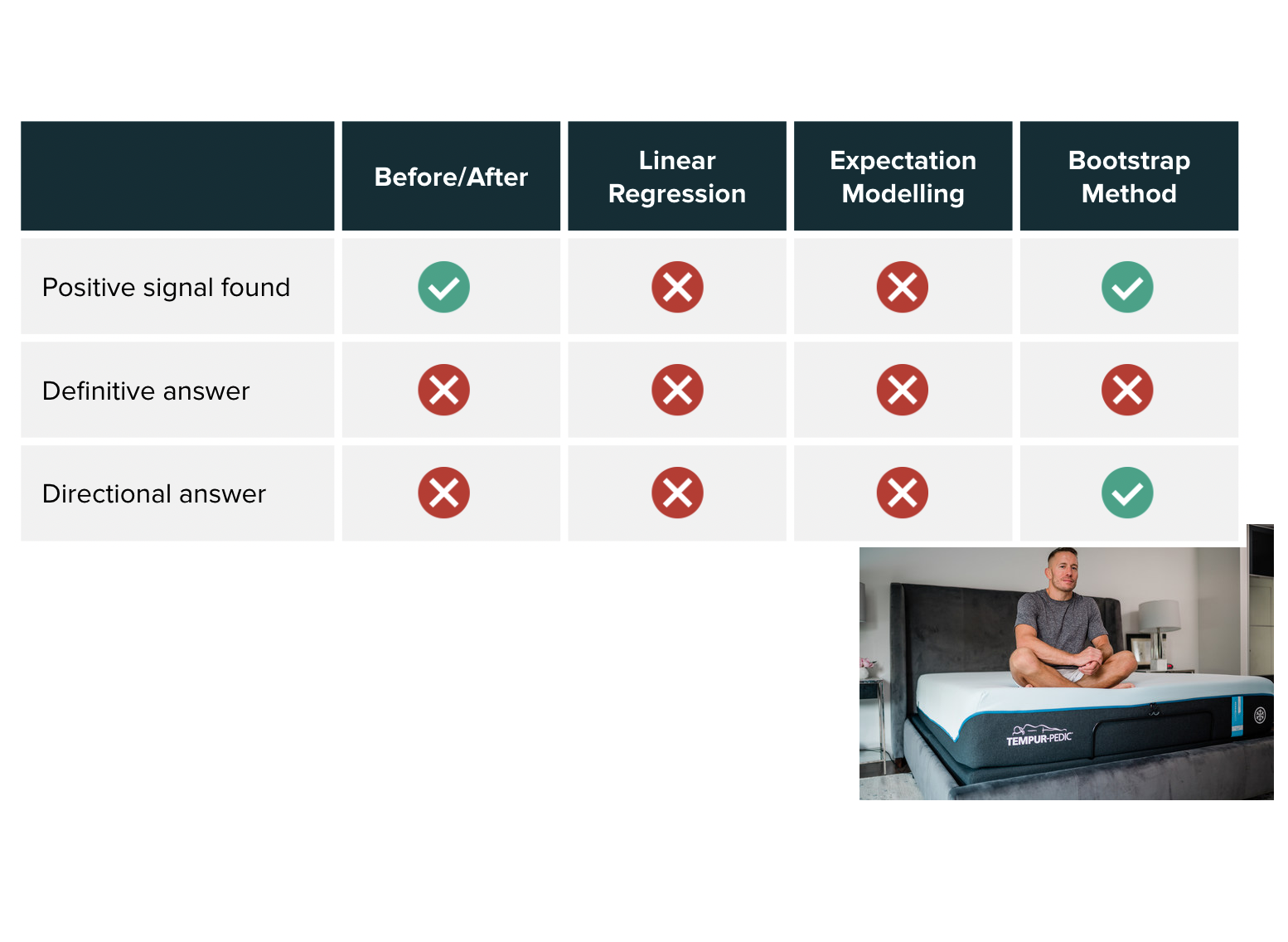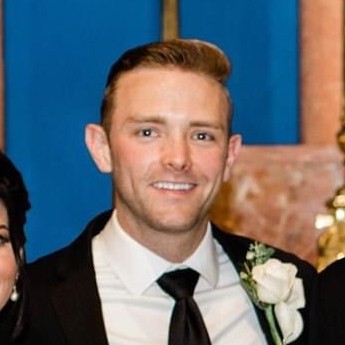
Tempur-Pedic
Based on four different econometrics models and run by Thrive’s data team, Tempur-Pedic was able to determine the best way to test the impact of top-of-funnel brand campaigns: geographical testing and platform testing.
Building a strong foundation for understanding cost-efficiency, scalability and engagement.

Platforms
Youtube and FacebookWhat We Did
- Before / After Testing
- Linear Regression Testing
- Expectation Modeling
- Simulation
TSI wanted to understand the impact of top-of-funnel reach campaigns on mattress purchases, so Thrive’s data team partnered with them to build four different econometrics models to help understand the impact, and decide the next steps.
Goals
Measure top-of-funnel campaign impact
Understand the impact of branded campaigns on mattress revenue performance.
Build four different econometrics models
Develop Before/After Analysis, Media Mix Modeling, Expectation Modeling and Simulation method
Solution
Before/After Analysis
Implemented this model to create a baseline to measure mattress sales offline and online and compare that to periods when top-of-funnel brand campaigns were on, nullifying all other variables.
Media Mix Modeling
Measured the relationship between top-of-funnel impressions against the level of mattress revenues by days.
Expectation modeling
A predictive machine learning type of analysis, only looking at performance for periods without top-of-funnel brand campaigns, and then creating expected results to compare against
Simulation method
Built thousands of simulations using machine learning to understand the impact of reach campaigns on company revenue
Adapting model based on Covid-19 impact
Prediction: Building a machine learning model. Comparison: Indexing results for comparison against the machine’s predicted value. Smoothing results: Repeating the prediction multiple times against a randomly created sample distributions. Visualization: Plotting the results against the dynamics of the channel
THE RESULT
Before/After
This type of test showed initial positive signal intents, but did not provide a definite or directional answer as to impact because of a multitude of external variables which influenced the test negatively - from a statistical standpoint.
Linear Regression/Expectation Modeling
Due to COVID-19 confounding results, no clear relationship from a signaling or directional answer was found because the pandemic data influenced the data points too drastically. The expectation modeling machine was used for the simulation method, described below.
Simulation method
Due to the impact of COVID, Thrive had to adapt its studies to understand the impact of Top-of-funnel brand campaigns on revenue. This was done as follows:
- Prediction: Building a machine learning model (completed for expectation modelling)
- Comparison: Indexing results for comparison against the machine’s predicted value
- Smoothing results: Repeating the prediction multiple times against a randomly created sample distributions
- Visualization: Plotting the results against the dynamics of the channel
Recommended test
Based on the results of the simulation method, Thrive completed the first goal of the project - to find a cost-efficient manner to test the impact. Thrive Digital recommended either Geographical testing with holdouts or platform lift testing - which would limit it to only Facebook.
“Add client testimonial, sample text in here from TSI main POC.”

Eric Mueller
Manager, eCommerce and DTC Marketing at Tempur Sealy International
More Stories
We work across a broad range of projects at Thrive, here are some of the common reasons people come to us:

 Read the Case Study
Read the Case Study

 Read the Case Study
Read the Case Study

 Read the Case Study
Read the Case Study